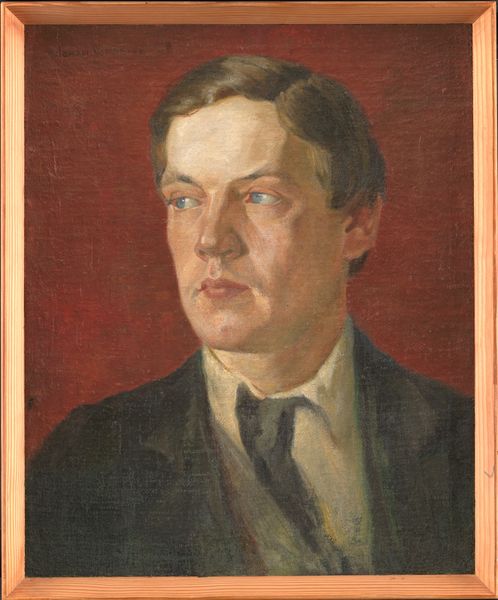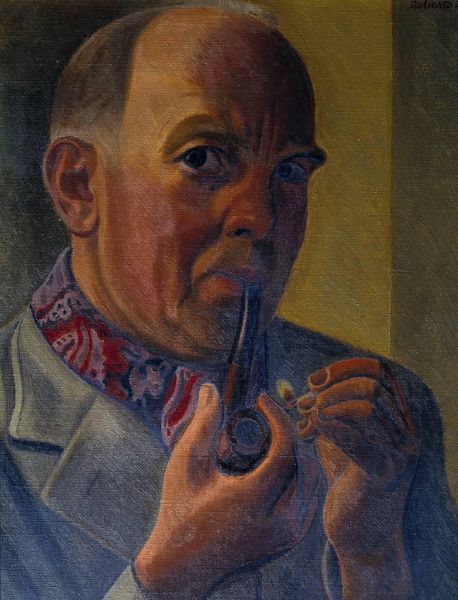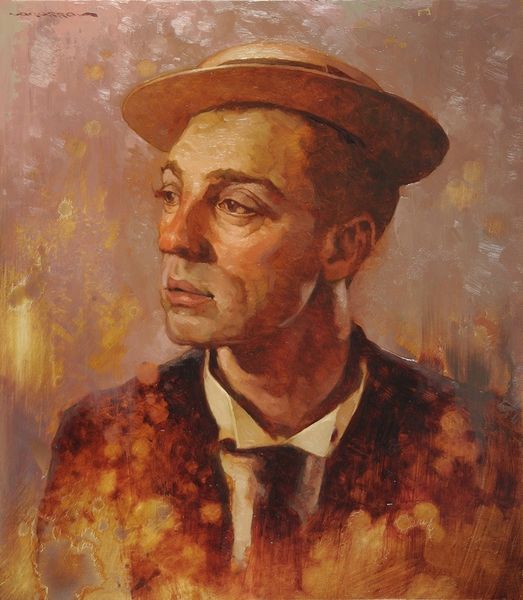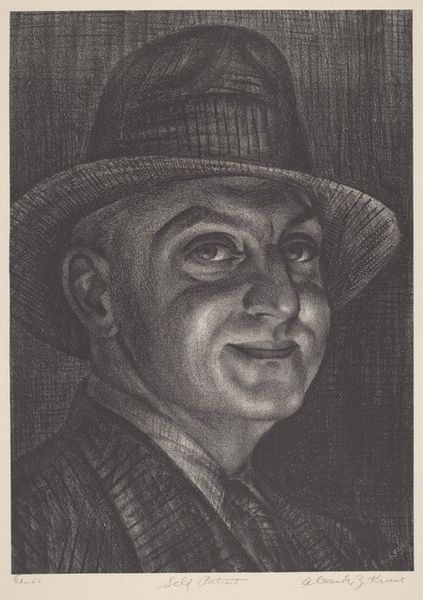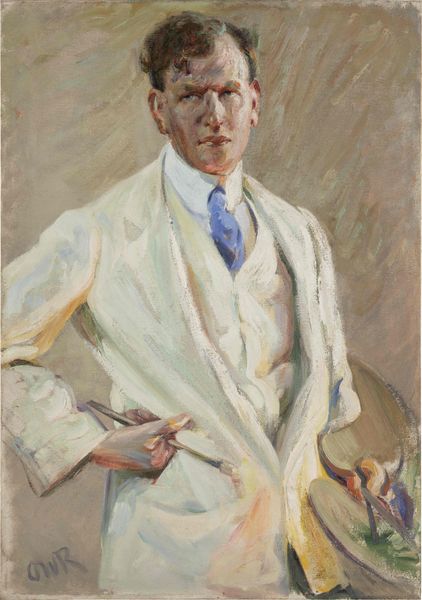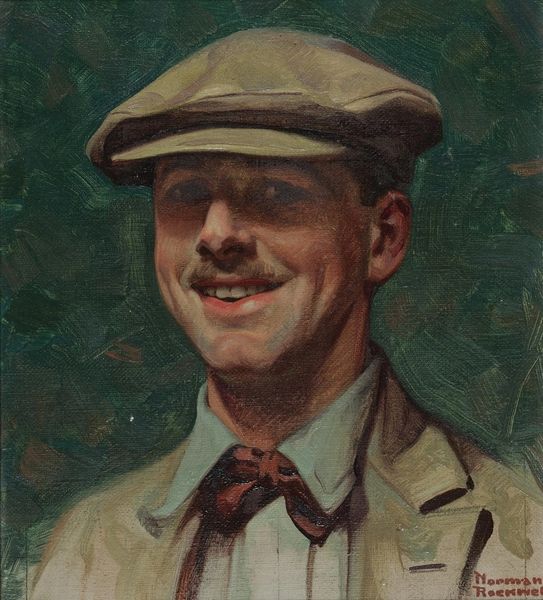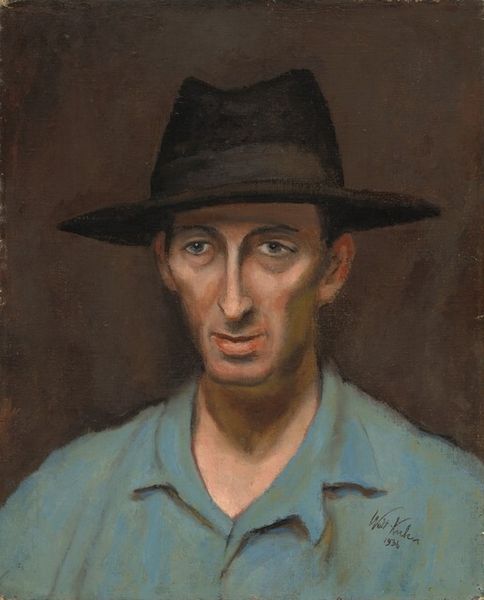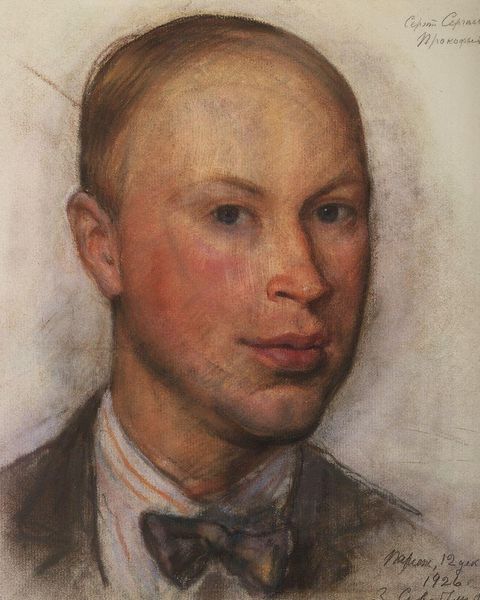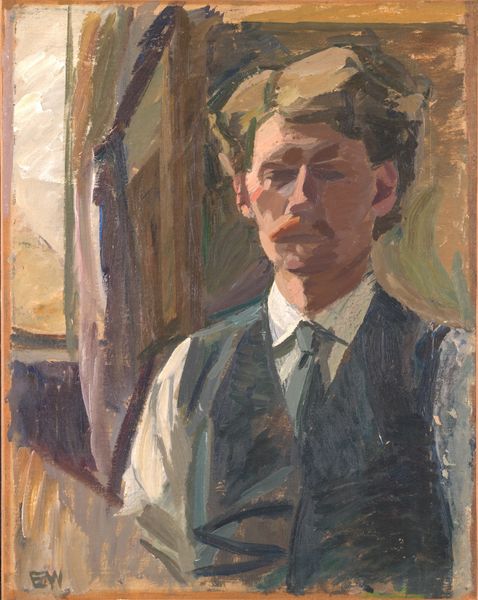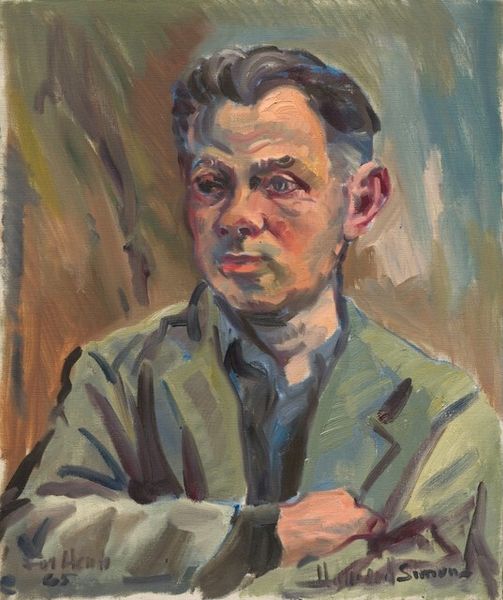
Dimensions: support: 559 x 359 mm frame: 695 x 503 x 75 mm
Copyright: © The estate of William Roberts | CC-BY-NC-ND 4.0 DEED, Photo: Tate
Curator: Here we have William Roberts' "Self-Portrait Wearing a Cap," part of the Tate Collections. Editor: It strikes me as quite a formal portrait, considering it's a self-portrait. The hat and tie feel almost like a uniform. Curator: Indeed. The cap, particularly, has working-class associations, while the tie suggests aspiration. Roberts often explored the individual within the industrialized world. Editor: I'm interested in the handling of paint here. Look at the visible brushstrokes in the background and the layering of color in the face. It's a constructed image, built from the materials themselves. Curator: Notice also the eyes, those piercing blue eyes. They draw you in, creating a direct connection to the artist's inner self, a timeless visual bridge. Editor: The materiality and social signaling here seem intentionally accessible. Curator: It's a powerful combination, isn't it? Editor: Absolutely, a fascinating interplay between representation and reality.
Comments
tate 8 months ago
⋮
http://www.tate.org.uk/art/artworks/roberts-self-portrait-wearing-a-cap-n05372
Join the conversation
Join millions of artists and users on Artera today and experience the ultimate creative platform.
tate 8 months ago
⋮
Roberts developed a highly personal style of portraiture. His earliest surviving drawings are predominantly portraits, and include a self-portrait of about 1911. Roberts preferred to employ familiar models and regularly used himself, his wife Sarah and his only son, John. The format increasingly favoured by the artist was head and shoulders. This allowed him to concentrate on the face and exclude any surrounding details which might be distracting. In 'Self Portrait Wearing a Cap' Roberts depicts himself in a shirt, wearing braces, tie and a flat cap. He thus identified himself as a working man, a persona he projected in later self-portraits of the 1950s and 1960s. Gallery label, August 2004

